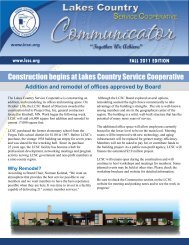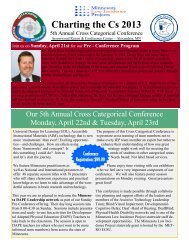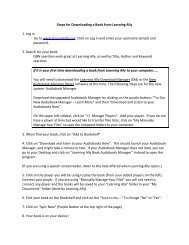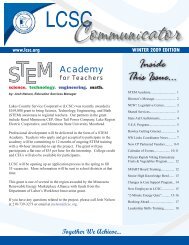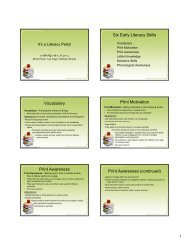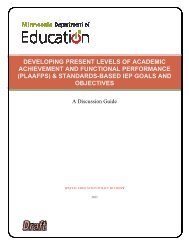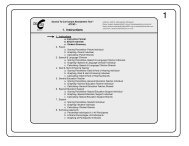Lesson Plan
Lesson Plan
Lesson Plan
Create successful ePaper yourself
Turn your PDF publications into a flip-book with our unique Google optimized e-Paper software.
3. Prior teacher preparation and knowledge of students:<br />
Teachers must collect the materials listed on the handout. A good resource for this<br />
material is www.kelvin.com for a complete list of materials; please reference the handout<br />
on constructing a Fixed Magnet DC Motor.<br />
Students will need a basic understanding of electrical charges. A good starting point is to<br />
watch a power point presentation on DC motor fundamentals. Another example would<br />
be to show the students an example of an electromagnet, and in so doing create a simple<br />
circuit using batteries, or a DC power supply.<br />
4. List of materials/resources.<br />
Small Magnets (4-6 per motor)<br />
Large Paper Clips<br />
Alligator clip test leads 2 per motor<br />
1/16” drill bit<br />
D size battery holder<br />
Wire cutters<br />
D sized Alkaline Dry Cell<br />
Clear Tape<br />
Exacto knives, 1 per group<br />
Needle Nose pliers<br />
Wooden Block approximately ¾” x 4” x 4”<br />
Enameled Magnet Wire 24-18 gauge approximately 24inches per motor<br />
Toilet Paper Rolls, or a Wooden Dowel of approximately the same diameter.<br />
5. <strong>Lesson</strong> Procedure<br />
Introduction:<br />
Review the handout on motor terminology.<br />
Watch the power point presentation on DC motor fundamentals.<br />
Review the handout on how to construct a fixed magnet DC motor.<br />
Exploring/Development<br />
Working individually, or in pairs, students will construct a fixed magnet DC motor.<br />
As students progress through the project, ask them to identify the various parts and<br />
the purpose they serve to allow the motor to operate. Students will be presented with<br />
various problem solving opportunities, encourage them to try there own ideas to reach<br />
the desired solution.<br />
Instructors should use their judgment, when dealing with students with special needs.<br />
Additional supervision or adaptations may be necessary. E.g. teacher aide must be<br />
present with student at all times during the activity to prevent injury.





